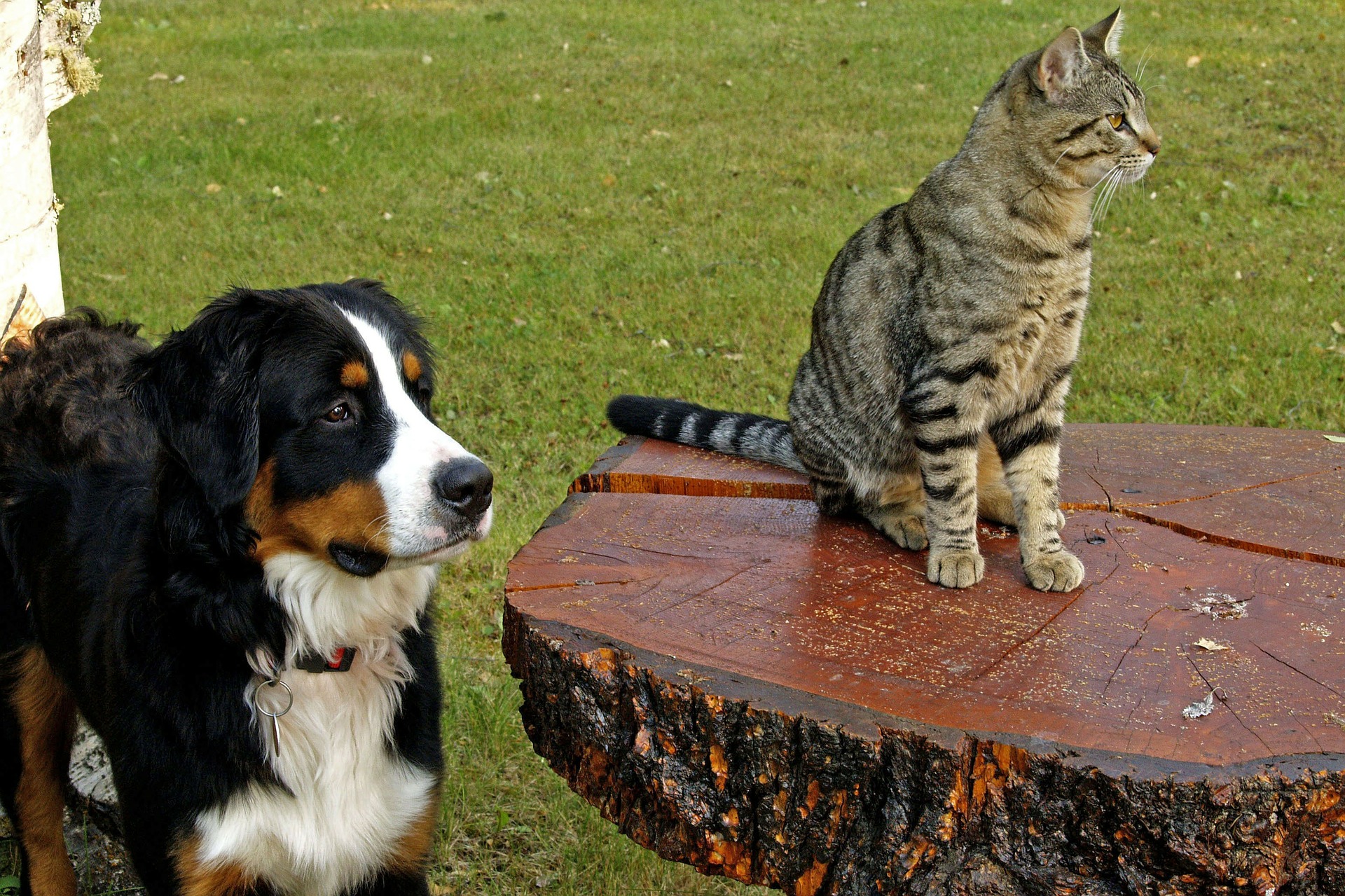Dogs and cats stereotypically do not get along, but this doesn’t have to be the case. So long as both animals have compatible temperaments and are properly introduced and socialized, it’s possible to have both a cat and a dog. You can take steps to train your dog in preparation for a new feline friend to help ensure that they have a successful introduction.

Before looking into getting a new cat, consider your dog’s personality first. Are they rambunctious? Nervous? Overprotective? Do they tend to exhibit high prey drives (chasing and catching animals smaller than them)? Has your dog behaved well with cats in the past? The answers to these questions should inform your decision about what age of cat you should adopt certain traits to look for in a cat, or whether or not you should get a cat in the first place.
Once you’ve decided that you do indeed want a cat, begin preparing your pup for their arrival. Work on your dog’s mastery of “sit”, “leave it” and “stay” so that you are comfortable and confident that you have control over them. Incorporate items that they want to investigate into your training, such as a yummy-smelling treat hidden under a cup.
- Tell your dog to sit, then place the cup about 10 or 15 feet in front of them and say “leave it”.
- Reward them with treats from your hand as they ignore the hidden snack.
- Gradually bring the cup closer during your training sessions. You can allow them to sniff and investigate the cup, but routinely call them away and tell them to leave it.
- Training sessions don’t have to be official. You can bring out the cup with the hidden treat at other times as well, such as when you are playing or just relaxing. Place it in a random spot of the room, and if your pup shows interest, tell them to leave it. This will help prepare your pup to curb their excitement and curiosity when it comes to sharing space with the new cat.
Tip: You may also want to work on your pup’s recall to make sure it is sharp as well. A great recall will make it simpler to get your dog away and give the new cat space when needed.
Toys made for cats are significantly less durable than those for dogs–if a dog gets hold of a cat’s toy, that toy usually does not last long. To help prevent this issue, get your cat toys ahead of time. Pick one up, tell your pup to sit, then set the toy aside and praise them. Repeat with a toy of their own, only this time, give it to them when they sit. Over time, your dog will learn which toys they’re praised for taking, and which they get praised for leaving alone. While this isn’t a failsafe method for keeping your cat’s toys safe, it may help decrease the toy casualties.
When introducing any new animal, you should plan to keep them confined to a single room so they can get accustomed to the new environment safely and away from other pets. To prepare your dog for the new occupant, remove their access to the room in which you plan to keep the cat. This way, their routine is a little less shaken once you bring the cat home. It also will help decrease their smell in that room to make the new cat more comfortable.
No matter what your issue with training your dog, Gulf Coast K9 Dog Training is here to help. Check out our website for information on obedience classes, playcare and more.




